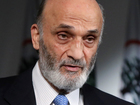Copyright reuters

NEW YORK, Oct 29 (Reuters) - The Federal Reserve's Standing Repo Facility on Wednesday recorded the highest level of usage since its launch in 2021, as central bankers are widely expected to announce an end to their balance sheet drawdown. Eligible financial firms took slightly over $10 billion in loans from the facility, widely known as the SRF. Collateralizing that borrowing was $2 billion in Treasury bonds and $8.2 billion in mortgage-backed securities. Despite the record borrowings, SRF volume remains very small relative to the roughly $1 trillion per day in the tri-party general collateral repo borrowing sector, for example. Advertisement · Scroll to continue The SRF was created to provide fast liquidity for firms, provide a shock absorber for the market, and allow the Fed to refrain from traditional interventions. SRF usage has been ticking higher since mid-month amid a broader rise in money market rates. The updraft in money market rates includes a drift higher in the federal funds rate, the central bank's chief tool to influence the economy. Other money market rates have also risen. The market rate shift indicates to a wide range of Fed watchers that the central bank's quantitative tightening effort, or QT, which has been running since 2022, may have taken too much liquidity out of the financial system. If it goes too far, the Fed could lose firm control of the fed funds rate, which happened in September 2019 during the last QT chapter. Advertisement · Scroll to continue Many forecasters expect the Federal Open Market Committee to end its meeting on Wednesday by reducing the 4% to 4.25% federal funds rate range by a quarter percentage point, and possibly ending QT very soon. Closing off QT, which involves the Fed allowing a set amount of its bond holdings to expire and not be replaced, in theory takes downward pressure off market liquidity, and could allow money market rates to retreat. QT has thus far brought the Fed's balance sheet down from its $9 trillion peak in 2022 to its current level of $6.6 trillion. Given that QT's pace of liquidity destruction is already quite modest, the upward drift of rates has indicated to some market watchers the Fed may have to expand its balance sheet again soon with Treasury bond purchases. Ad Break Coming Up NEXT StayNext OffEnglish 180p288p360p480p540p576p720pHD1080pHDAuto (180p) About ConnatixV2127676363 About ConnatixV2127676363 Continue watchingafter the adVisit Advertiser websiteGO TO PAGE Reporting by Michael S. Derby; Editing by Richard Chang Purchase Licensing Rights Get the key points from this story with Reuters AI



